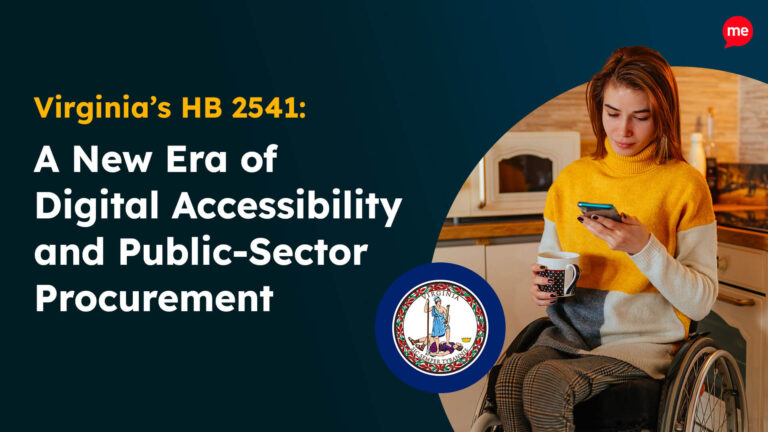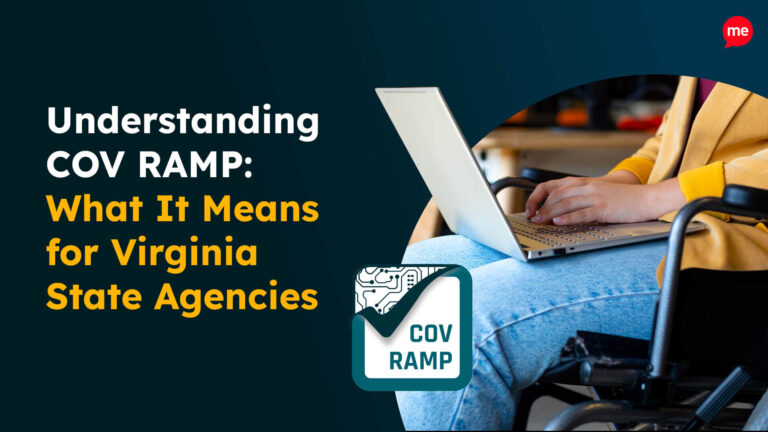Get A Free ADA Compliance Audit Of Your Website
Download NowIn recent years, the digital accessibility landscape has undergone a significant transformation. Several states have established stand-alone policies to promote online inclusion, which sit alongside existing federal legislation to provide a more comprehensive framework.
This shift underscores the growing recognition of digital accessibility as a fundamental aspect of modern life, and Arizona is one of the states at the forefront of this movement.
Confused about how to navigate the complexities of web accessibility compliance in Arizona? We’ve got you covered with this handy guide.
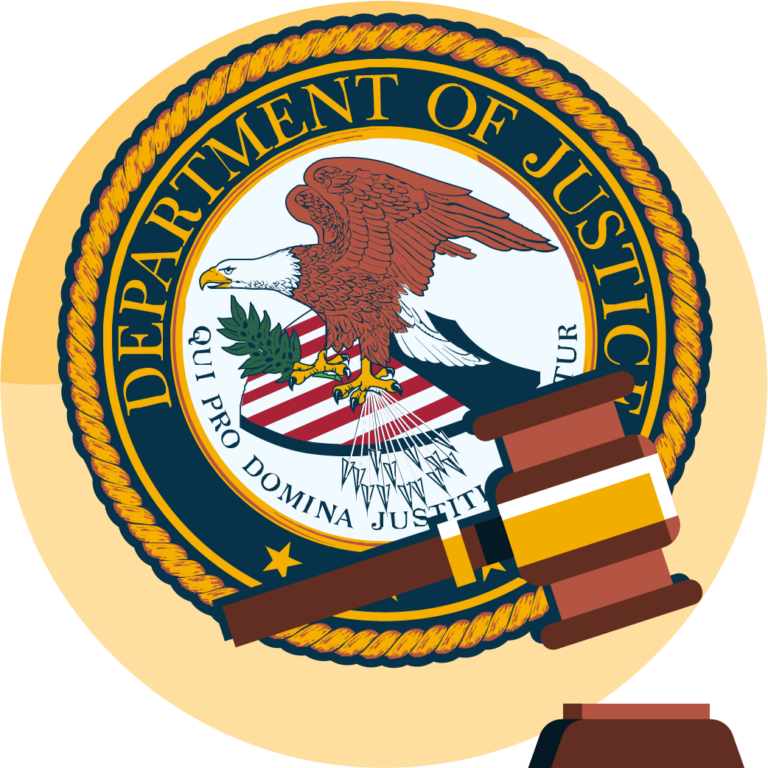
Web Accessibility Laws in Arizona
Arizona is the 6th largest state in the US. It has a population of nearly 7.5 million, of which around 1 in 4 have a disability that can make accessing online content challenging. The following pieces of legislation help to provide equal access to those individuals by preventing discrimination in the digital realm.
The Arizona Accessibility Policy
Developed by the Arizona Strategic Enterprise Technology Office (ADOA-ASET), Arizona’s Accessibility Policy aims to provide advanced technical criteria to avoid website visitors facing online barriers. Specific web page designs and features covered include:
- Graphics
- Information in color
- Moving content
- Downloadable files
- Repetitive content
- Data tables
- Multimedia sounds
- Image maps
- Style sheets
- Forms
- Scripts
- Applets and plug-ins
- Frames
- Keyboard control
- Text-only pages
- Biometric identification
- Equivalent facilitation
The Americans With Disabilities Act
The Americans with Disabilities Act (ADA) is a landmark federal law prohibiting discrimination against individuals with disabilities in all areas of public life, including employment, education, transportation, and public accommodations. Originally enacted to address physical barriers, the ADA now encompasses digital spaces, recognizing websites and online platforms as extensions of physical environments.
Of the five Titles that comprise ADA legislation, three relate specifically to website accessibility:
- ADA Title I relates to employment discrimination, mandating information regarding recruitment, hiring, promotions, training, job assignments, and termination be accessible to everyone.
- ADA Title II addresses the accessibility of public services, programs, and activities, meaning local governments must make digital information equally available to disabled and non-disabled citizens.
- ADA Title III applies to public-facing businesses, requiring companies to provide full and equal online access to their goods, services, facilities, privileges, advantages, etc.
Check this blog out on ADA website compliance in Arizona.

Section 508
Section 508 of the Rehabilitation Act requires federal agencies to ensure that their electronic and information technology is accessible to all. The two primary goals are to provide:
- Equal access to information for federal employees with disabilities.
- Comparable access to data and resources for members of the public seeking federal information or services.
Stay ahead of the game when it comes to Digital Accessibility laws and compliance in the United States. Learn about all the different federal and state-level regulations, see real examples of web accessibility lawsuits in different regions and discover a 7-step action plan for building accessible websites.
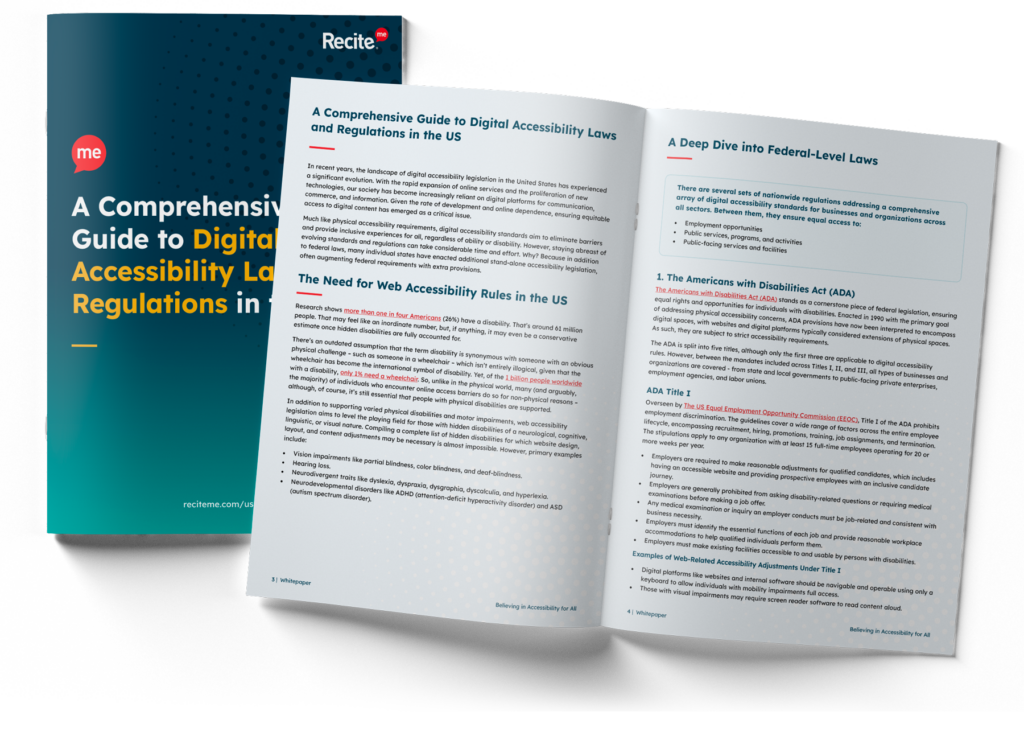
Which Businesses Do Arizona Web Accessibility Laws Apply To?
Arizona’s Accessibility Policy applies primarily to state offices, branches, and departments. However, it also applies to organizations receiving state funding, meaning the criteria are also relevant to:
- Nonprofits
- Educational institutions
- Tribal entities
- Religious organizations
Similarly, while Section 508 applies primarily to federal agencies, it also has implications for businesses that contract for or receive funding from the federal government, encompassing:
- Direct or indirect subcontractors
- Non-profit grant recipients
- For-profit funding recipients
The ADA is the only legislation that directly impacts public-facing organizations. As a state with one of the highest percentages of small businesses nationwide, this expands the importance of digital accessibility to hundreds of thousands of private entities.
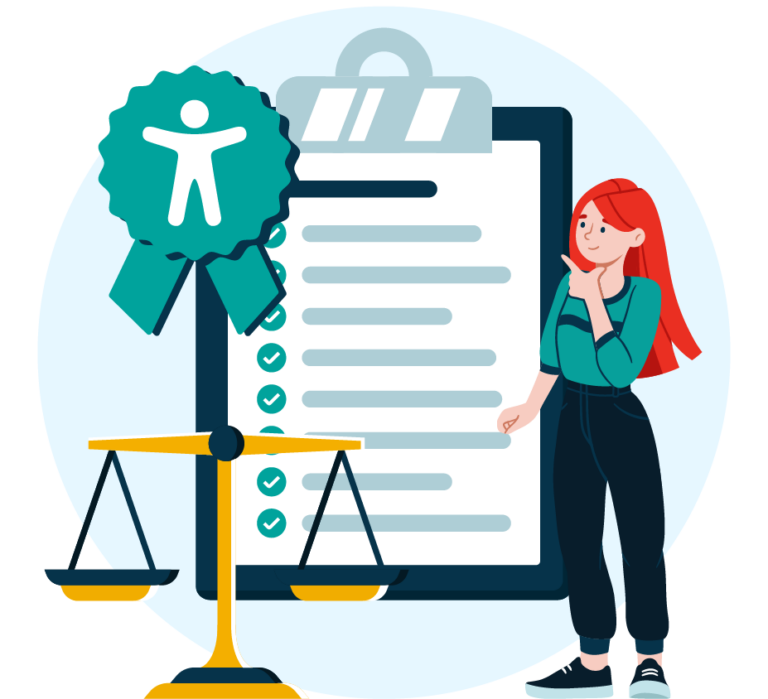
Consequences of non-compliance
Should a web accessibility case reach court, Arizona allows plaintiffs to recover compensatory damages for attorney fees and emotional distress. Furthermore, if non-compliance requires the vindication of public interest, penalties of up to $5,000 may apply for first-time violations, with repeat violations reaching up to $10,000. Federal penalties can be even more severe, with hefty fines for ADA and Section 508 breaches starting at $55,000 for the first offense and escalating to $110,000 for subsequent breaches.
However, the risks of a non-compliant website are not purely financial. The negative PR effect for any business involved in a filing can be significant. Examples include:
- Limited market reach
- Loss of revenue
- Reduced brand loyalty
- Reduced employee morale
- Drop in shareholder confidence
Notable Digital Accessibility Lawsuits in Arizona
The two names that pop up in Arizona web accessibility case laws most frequently are Peter Strojnik and James Close. Between them, they have filed hundreds of disability lawsuits against public and private entities – proving that excluding just a few determined citizens can result in serious repercussions.
About Peter Strojnik
Peter Strojnik, himself a former Arizona attorney, filed a cascade of disability lawsuits in 2019. His actions ultimately led to his disbarment. However, this did not stop him from pursuing his cause and filing over 200 cases, listing himself as the disabled plaintiff.
About James Close
In 2017, James Close, a legally blind Arizonian residing in Texas, filed multiple web accessibility suits against four Arizona businesses. Citing Title III of the ADA and clauses within the Arizonans with Disabilities Act (AzDA), he claimed that none of the websites in question were screen reader compatible and did not allow equal navigation and use by individuals with disabilities.
In addition to penalties and attorneys’ fees, Close sought permanent injunctions requiring the businesses to:
- Retain qualified consultants to make websites compliant in line with Web Content Accessibility Guidelines 2.0 (WCAG 2.0) Level AA.
- Train all employees involved in website development in WCAG 2.0 compliance
- Conduct ongoing audits and testing to ensure ongoing compliance.
- Develop an accessibility policy with an email address and telephone number to report accessibility-related problems.
- Take websites offline until they become fully ADA compliant.
Of course, these aren’t the only examples of Arizona web accessibility cases. Hundreds more are filed – and likely thousands more threatened – every year, highlighting the essential importance of compliance.

Free Accessibility Check of your Website
Finding accessibility issues is now easier than ever. Recite Me offers a free automated scan of your website’s homepage to highlight non-compliance. You’ll get recommendations on how to fix them, helping to improve your accessibility score.
The Importance of WCAG Compliance
The Web Content Accessibility Guidelines (WCAG) are widely recognized as the international standard for web accessibility. Compliance criteria revolve around the ‘POUR’ principles, which provide guidance on how to make online content suitably:
- Perceivable
- Operable
- Understandable
- Robust
WCAG guidelines are organized into different conformance levels (A, AA, and AAA), each indicating the degree of accessibility achieved. Current Arizona web accessibility legislation requires compliance with WCAG 2.0 Level AA. However, as 75% of all federal claims reference the most up-to-date version, WCAG 2.1AA, enhanced compliance is recommended to avoid unnecessary risk.
How to Make Your Website Compliant with Arizona Web Accessibility Laws
The best way to avoid legal risk is to be proactive rather than waiting for lawsuits or allegations to arise. However, as website content evolves continuously, achieving compliance can feel like a daunting task – especially for organizations without in-depth accessibility knowledge or technical experience. That’s where Recite Me software comes in.
The Recite Me team has developed a suite of web accessibility tools dedicated to helping organizations enhance their website build, boost usability, and demonstrate commitment to accessibility. Here’s how they work.
The Recite Me Accessibility Checker
The Recite Me Accessibility Checker audits back-end and front-end web development processes using 396 separate WCAG-based scans. It swiftly identifies non-compliance issues and generates a prioritized fix queue to get websites up to a legally compliant standard in the fastest possible time frame.
Schedule a free demonstration or run a free scan today to kickstart your compliance journey.
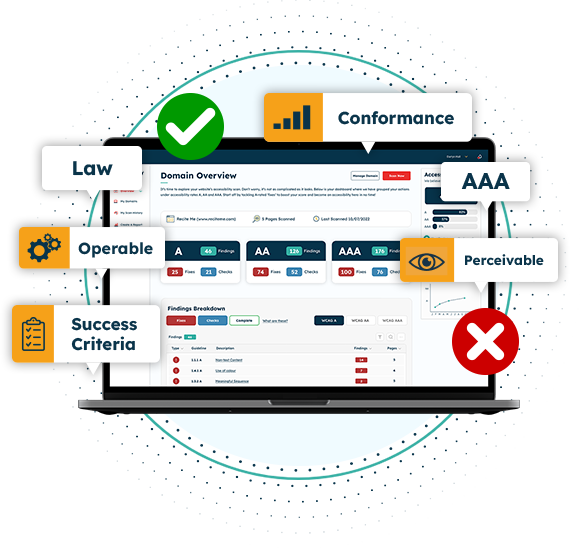
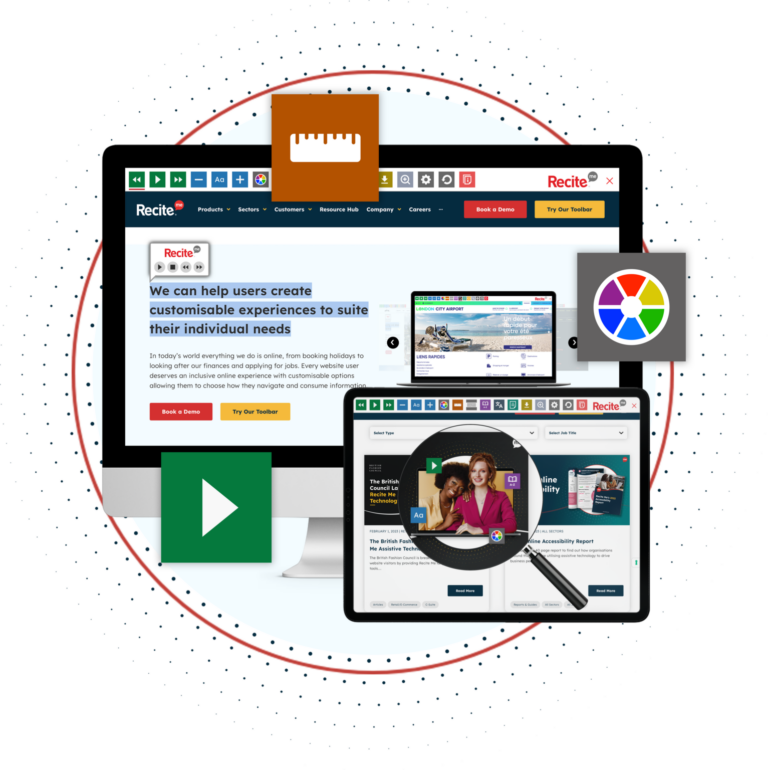
The Recite Me Toolbar
The Recite Me Toolbar promotes inclusivity on an individual user level by allowing website visitors with sight loss, cognitive impairments, learning difficulties, physical disabilities, and varying linguistic needs to make singular or multiple adjustments for ease of navigation and reading.
Schedule a free demonstration, or try the toolbar today!
The Recite Me Accessibility Statement Generator
The Recite Me Accessibility Statement Generator provides a simple way to communicate your dedication to current and future digital accessibility goals. Just fill in a quick form, and you’ll have a custom statement ready for immediate upload within minutes.

